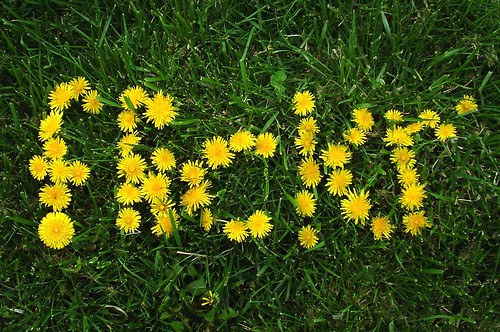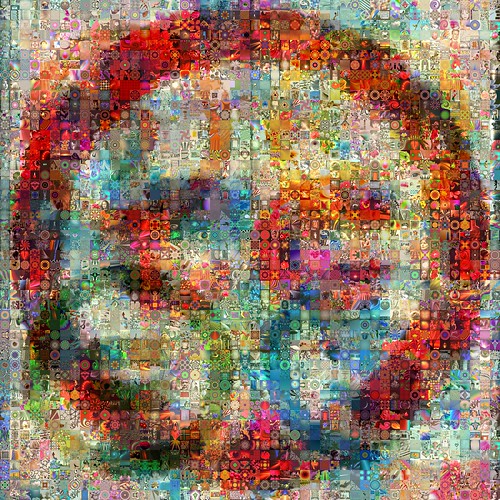Sampling and online reuse are enormously common in our culture today. But if you really believe in making some of that culture freely accessible, it follows you must also make free licenses explicit. Simply taking something because it’s there isn’t fair to the person who created the content, whose rights should come first, and it doesn’t help advance the cause of free content. If we want content to be more freely accessible, we need to give first priority to those materials explicitly licensed for free use.
All of that is to say, we need to obey the law. And that’s generally been the goal on CDM.
Here’s the rub: while Creative Commons licenses show a lot of promise, they also have occasionally run up against vague definitions or not-quite-airtight license variants. Case in point: the “non-commercial” restriction commonly used by creators. Let’s say you upload an image to Flickr. Adding a “non-commercial” restriction seems logical enough as a way to protect yourself against your image being abused, right?
The problem is, when looking at the actual language of the license, the definition of non-commercial use is not clear. Here’s what the license says:
“You may not exercise any of the rights granted to You in Section 3 above in any manner that is primarily intended for or directed toward commercial advantage or private monetary compensation. “
Source: the current full text of the license (3.0)
Is CDM’s usage of Flickr images with non-commercial Creative Commons licenses a violation of that license? It’s not entirely clear. While the site uses those images for illustrative purposes, and while the site carries ads from which we gather revenue, it’d be a stretch to say the use of the images themselves was directed toward monetary gain.
Ultimately, though, an ambiguous license isn’t good enough. To be able to use images without contacting photographers for their permission, we need confidence that the license is clear. And even if we were on legally good standing – and it’s unclear that we are – we would want to obey the intentions of the content creators.
The question of commercial status and the Creative Commons license led to a prolonged Twitter discussion between me and Chris Randall of Analog Industries and plug-in maker Audio Damage. Unlike CDM, the Analog Industries blog is copyrighted, not under a Creative Commons license, but Chris has used CC licenses in the past for his music. Chris’ argument was, in short, that CDM was in violation of the CC-NC license as the use constituted a commercial use. The obligation lies with me to prove otherwise, and based on the survey results, I don’t think I can.
I’m not the only person bothered by the ambiguity. Creative Commons has conceded that questions about commercial or non-commercial are some of the most common queries they receive. And the situation was ambiguous enough for CC to undertake a full survey of CC users and creators.
The results of this survey were published in September:
Defining Noncommercial
Read through the complete results, however, and the question of non-commercial status is murkier than ever. The most significant question for publishers (and many content creators) is at what point a site with ads becomes a commercial use. You’ll see the answers can vary wildly depending on how the question is asked, and what the respondent understands to be the usage case.
That said, now having fully read through the results, I think I have to change the policy on CDM. Having some people disagree isn’t good enough, and no matter how you ask the question, a significant number of content creators view sites with ads as commercial – no discussion. (Some even would classify sites by non-profits using ads to recoup hosting costs in this way!)
I’ve found Flickr users have actually been really enthusiastic to discover their work on the site; those are the comments I’ve gotten. Unfortunately, I have to balance that enthusiasm against the larger perception of the policy.
In short, if you’re placing images under an NC license, don’t expect to see them on CDM any more.
New CDM policy
From here on out, I will only make use of images that fit one of the following conditions:
- Creative Commons licenses with BY, SA, or ND restrictions, but not NC
- Public domain images
- Images used as implied (such as press images, etc.)
- Images used by specific permission
Videos are, of course, a different story, as the ability to embed these materials is assumed to mean an implied license, and I’ve never seen otherwise. Likewise, it seems that the use of Flickr tag slideshows and badges containing images – even copyrighted images – does not violate Flickr’s terms of service or the wishes of the copyright holder; this is in essence a view of the Flickr site itself, and should not diminish the value of a photographer’s work nor conflict with their likely intentions when they upload to Flickr.
There’s really no way to operate on the Internet without coming across some of these gray areas, but to me the spirit of the law and the intentions of the creators remains paramount.
How to protect your work without Non-Commercial restrictions
This may raise the question, how do you prevent your work from being exploited while at the same time allowing a site like CDM to republish it? One of the “commercial” uses cited in the survey results is the rather nasty scenario of the spam blog re-purposing stories via RSS. There have been cases of CC-licensed Flickr images being used for ads in bus stops. (See the instance of Virgin’s ads, taken from CC-licensed Flickr images. Note, however, the controversy there – aside from whether they actually complied with the CC licenses – was whether they had the rights to the likenesses of people in those images, which is a different legal area.)
My answer, and the answer on which I’ve settled for CDM’s content: use a ShareAlike license.
What makes ShareAlike unique is that it requires any distribution or repurposing of your content to have the “resulting work only under the same, similar or a compatible license.” That means you couldn’t, say, make an ad out of your photo without placing the ad under the same license — effectively preventing some of the more nefarious uses of CC-licensed works.
I do think that Creative Commons needs to present more explicit, clear, legally-binding documentation for the Non-Commercial restriction in the actual license. But until then, if you’re bothered by this ambiguity, you can resort to the more unambiguous ShareAlike license term.
Note that CDM itself is under a ShareAlike license. Because it’s compatible with any of the other CC SA licenses, that also gives us the right to use SA-licensed content – and, incidentally, were we not licensed that way, we should not have that ability.
HELP US!
To bring CDM into compliance with the non-commercial license, I need your help.
Got some regex skills? A regular expression should be able to purge all the images in CDM’s story database with non-commercial CC licenses, because images link to the specific license used. It’s simply a matter of then pulling the img src, anchor, and image caption div code around that license link.
Get in touch or respond in comments.
Got an image you don’t want to see lost? You can search CDM easily by your name and/or Flickr userid and find your image. Then let us know:
Provide permissions for a CC-NC-licensed image [Google Docs form]
Correction: I can actually observe a number of images I’ve used over the years with links back to CDM from the Flickr pages. So this would actually be the worst possible thing I could do, to remove those images. Obviously, the better solution is to wait and see if someone requests that an archived image be taken down. The Creative Commons license itself is non-revocable, but since this falls into a gray area in which we may not even been in compliance with someone’s license, that’s a moot point. And since those images are clearly marked by license, any derivative work based on them could check first if the license permits derivations. (That’s something you’d have to do anyway, as some images on CDM are copyrighted and used exclusively on CDM by permission.)
As a separate note, I’m now going to go through my own Flickr accounts and remove the non-commercial requirement, because my sense is that ShareAlike will prevent the unlikely event of them being abused within the license terms.
Disclaimer: This story is an editorial, an opinion piece. It does not constitute a legal statement (I’m not a lawyer) or official, binding statement of Create Digital Music’s policy. It expresses only the opinions of its author.


